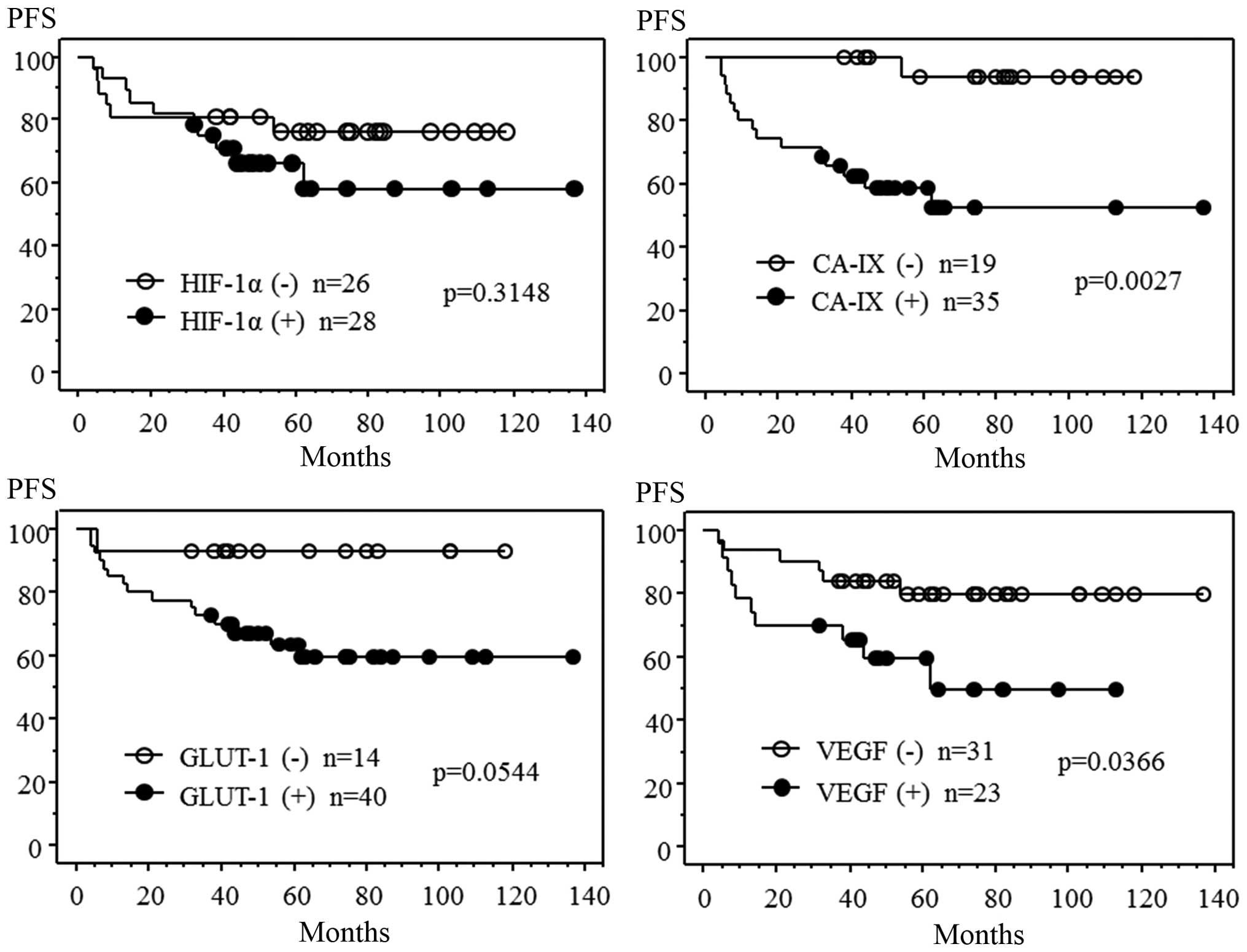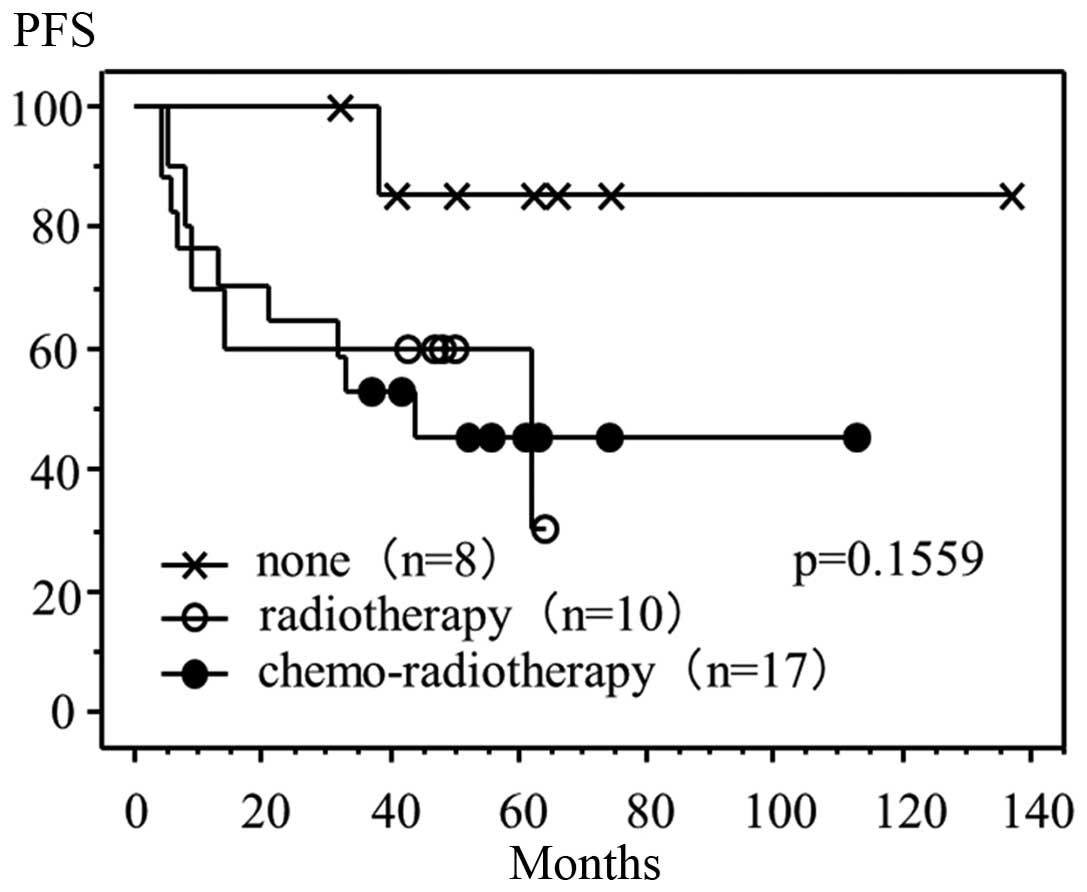|
1
|
Tewari KS and Monk BJ: Invasive cervical
cancerClinical Gynecologic Oncology. DiSaia PJ and Creaseman WT:
8th. Mosby; Philadelphia, PA: pp. 51–120. 2012, View Article : Google Scholar
|
|
2
|
Pecorelli S: Revised FIGO staging for the
vulva, cervix and endometrium. Int J Gynaecol Obstet. 105:103–104.
2009. View Article : Google Scholar : PubMed/NCBI
|
|
3
|
Creasman WT and Kohler MF: Is lymph
vascular space involvement an independent prognostic factor in
early cervical cancer? Gynecol Oncol. 92:525–529. 2004. View Article : Google Scholar : PubMed/NCBI
|
|
4
|
Narayan K, Fisher R and Bernshaw D:
Significance of tumor volume and corpus uteri invasion in cervical
cancer patients treated by radiotherapy. Int J Gynecol Cancer.
16:623–630. 2006. View Article : Google Scholar : PubMed/NCBI
|
|
5
|
Biewenga P, van der Velden J, Mol BW, et
al: Validation of existing prognostic models in patients with
early-stage cervical cancer. Gynecol Oncol. 115:277–284. 2009.
View Article : Google Scholar : PubMed/NCBI
|
|
6
|
Kurokawa T, Miyamoto M, Kato K, et al:
Overexpression of hypoxia-inducible-factor 1alpha (HIF-1alpha) in
oesophageal squamous cell carcinoma correlates with lymph node
metastasis and pathologic stage. Br J Cancer. 89:1042–1047. 2003.
View Article : Google Scholar : PubMed/NCBI
|
|
7
|
Schindl M, Schoppmann SF, Samonigg H, et
al: Austrian Breast and Colorectal Cancer Study Group:
Overexpression of hypoxia-inducible factor 1alpha is associated
with an unfavorable prognosis in lymph node-positive breast cancer.
Clin Cancer Res. 8:1831–1837. 2002.PubMed/NCBI
|
|
8
|
Unruh A, Ressel A, Mohamed HG, et al: The
hypoxia-inducible factor-1 alpha is a negative factor for tumor
therapy. Oncogene. 22:3213–3220. 2003. View Article : Google Scholar : PubMed/NCBI
|
|
9
|
Greijer AE, de Jong MC, Scheffer GL,
Shvarts A, van Diest PJ and van der Wall E: Hypoxia-induced
acidification causes mitoxantrone resistance not mediated by drug
transporters in human breast cancer cells. Cell Oncol. 27:43–49.
2005.PubMed/NCBI
|
|
10
|
Greijer AE, van der Groep P, Kemming D, et
al: Up-regulation of gene expression by hypoxia is mediated
predominantly by hypoxia-inducible factor 1 (HIF-1). J Pathol.
206:291–304. 2005. View Article : Google Scholar : PubMed/NCBI
|
|
11
|
Huang LE, Arany Z, Livingston DM and Bunn
HF: Activation of hypoxia-inducible transcription factor depends
primarily upon redox-sensitive stabilization of its alpha subunit.
J Biol Chem. 271:32253–32259. 1996. View Article : Google Scholar : PubMed/NCBI
|
|
12
|
Semenza GL: Regulation of mammalian O2
homeostasis by hypoxia-inducible factor 1. Annu Rev Cell Dev Biol.
15:551–578. 1999. View Article : Google Scholar : PubMed/NCBI
|
|
13
|
Semenza GL: HIF-1: mediator of
physiological and pathophysiological responses to hypoxia. J Appl
Physiol (1985). 88:1474–1480. 2000.PubMed/NCBI
|
|
14
|
Ratcliffe PJ, O'Rourke JF, Maxwell PH and
Pugh CW: Oxygen sensing, hypoxia-inducible factor-1 and the
regulation of mammalian gene expression. J Exp Biol. 201:1153–1162.
1998.PubMed/NCBI
|
|
15
|
VaughanJones RD and Spitzer KW: Role of
bicarbonate in the regulation of intracellular pH in the mammalian
ventricular myocyte. Biochem Cell Biol. 80:579–596. 2002.
View Article : Google Scholar : PubMed/NCBI
|
|
16
|
Behrooz A and Ismail-Beigi F: Stimulation
of glucose transport by hypoxia: Signals and mechanisms. News
Physiol Sci. 14:105–110. 1999.PubMed/NCBI
|
|
17
|
Pedersen MW, Holm S, Lund EL, Højgaard L
and Kristjansen PE: Coregulation of glucose uptake and vascular
endothelial growth factor (VEGF) in two small-cell lung cancer
(SCLC) sublines in vivo and in vitro. Neoplasia. 3:80–87. 2001.
View Article : Google Scholar : PubMed/NCBI
|
|
18
|
Robertson N, Potter C and Harris AL: Role
of carbonic anhydrase IX in human tumor cell growth, survival and
invasion. Cancer Res. 64:6160–6165. 2004. View Article : Google Scholar : PubMed/NCBI
|
|
19
|
Giatromanolaki A, Koukourakis MI, Sivridis
E, et al: Expression of hypoxia-inducible carbonic anhydrase-9
relates to angiogenic pathways and independently to poor outcome in
non-small cell lung cancer. Cancer Res. 61:7992–7998.
2001.PubMed/NCBI
|
|
20
|
Loncaster JA, Harris AL, Davidson SE, et
al: Carbonic anhydrase (CA IX) expression, a potential new
intrinsic marker of hypoxia: correlations with tumor oxygen
measurements and prognosis in locally advanced carcinoma of the
cervix. Cancer Res. 61:6394–6399. 2001.PubMed/NCBI
|
|
21
|
Younes M, Lechago LV, Somoano JR, Mosharaf
M and Lechago J: Wide expression of the human erythrocyte glucose
transporter Glut1 in human cancers. Cancer Res. 56:1164–1167.
1996.PubMed/NCBI
|
|
22
|
Clavo AC, Brown RS and Wahl RL:
Fluorodeoxyglucose uptake in human cancer cell lines is increased
by hypoxia. J Nucl Med. 36:1625–1632. 1995.PubMed/NCBI
|
|
23
|
Obermair A, BancherTodesca D, Bilgi S, et
al: Correlation of vascular endothelial growth factor expression
and microvessel density in cervical intraepithelial neoplasia. J
Natl Cancer Inst. 89:1212–1217. 1997. View Article : Google Scholar : PubMed/NCBI
|
|
24
|
Monk BJ, Tewari KS and Koh WJ:
Multimodality therapy for locally advanced cervical carcinoma:
state of the art and future directions. J Clin Oncol. 25:2952–2965.
2007. View Article : Google Scholar : PubMed/NCBI
|
|
25
|
Uemura H, Fujimoto K, Tanaka M, et al: A
phase I trial of vaccination of CA9-derived peptides for
HLA-A24-positive patients with cytokine-refractory metastatic renal
cell carcinoma. Clin Cancer Res. 12:1768–1775. 2006. View Article : Google Scholar : PubMed/NCBI
|
|
26
|
Tewari KS, Sill MW, Long HJ III, et al:
Improved survival with bevacizumab in advanced cervical cancer. N
Engl J Med. 370:734–743. 2014. View Article : Google Scholar : PubMed/NCBI
|
|
27
|
Peters WA III, Liu PY, Barrett RJ II, et
al: Concurrent chemotherapy and pelvic radiation therapy compared
with pelvic radiation therapy alone as adjuvant therapy after
radical surgery in high-risk early-stage cancer of the cervix. J
Clin Oncol. 18:1606–1613. 2000.PubMed/NCBI
|
|
28
|
Liao SY, Darcy KM, Randall LM, et al:
Prognostic relevance of carbonic anhydrase-IX in high-risk,
early-stage cervical cancer: a Gynecologic Oncology Group study.
Gynecol Oncol. 116:452–458. 2010. View Article : Google Scholar : PubMed/NCBI
|
|
29
|
Airley R, Loncaster J, Davidson S, et al:
Glucose transporter glut-1 expression correlates with tumor hypoxia
and predicts metastasis-free survival in advanced carcinoma of the
cervix. Clin Cancer Res. 7:928–934. 2001.PubMed/NCBI
|
|
30
|
Loncaster JA, Cooper RA, Logue JP,
Davidson SE, Hunter RD and West CM: Vascular endothelial growth
factor (VEGF) expression is a prognostic factor for radiotherapy
outcome in advanced carcinoma of the cervix. Br J Cancer.
83:620–625. 2000. View Article : Google Scholar : PubMed/NCBI
|
|
31
|
Cheng WF, Chen CA, Lee CN, Wei LH, Hsieh
FJ and Hsieh CY: Vascular endothelial growth factor and prognosis
of cervical carcinoma. Obstet Gynecol. 96:721–726. 2000. View Article : Google Scholar : PubMed/NCBI
|
|
32
|
Alitalo A and Detmar M: Interaction of
tumor cells and lymphatic vessels in cancer progression. Oncogene.
31:4499–4508. 2012. View Article : Google Scholar : PubMed/NCBI
|
|
33
|
Hashimoto I, Kodama J, Seki N, Hongo A,
Yoshinouchi M, Okuda H and Kudo T: Vascular endothelial growth
factor-C expression and its relationship to pelvic lymph node
status in invasive cervical cancer. Br J Cancer. 85:93–97. 2001.
View Article : Google Scholar : PubMed/NCBI
|













